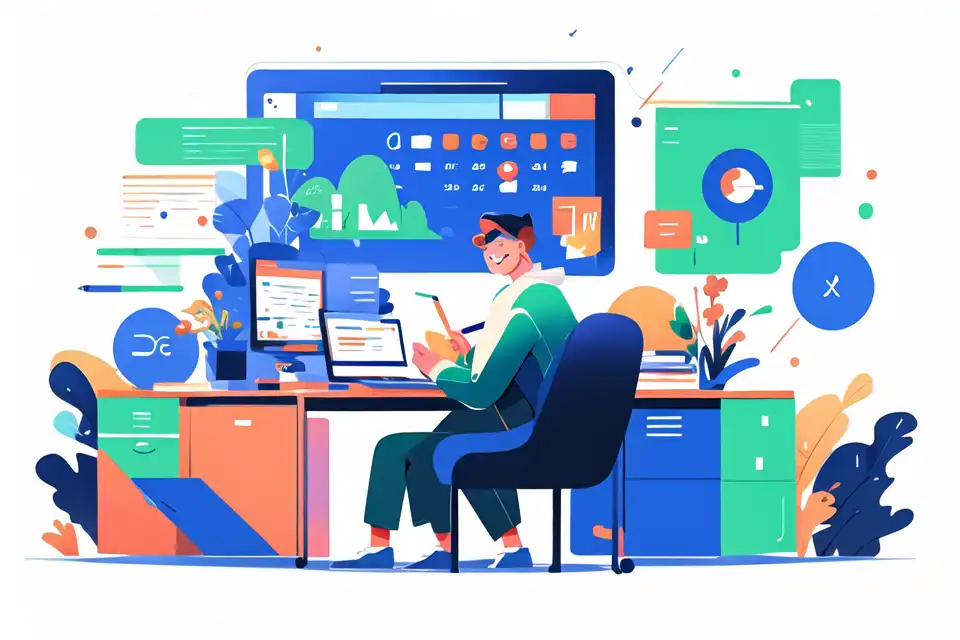Visual Goals for Customer Service Teams
Unlock the power of visual goals for customer service teams with our comprehensive guide. Explore key goal setting techniques and frameworks to drive success in your functional team with Lark's tailored solutions.
Try Lark for Free
Effective communication and problem-solving are essential components of successful customer service operations. However, traditional methods of setting goals for customer service teams often overlook the impact of visual elements. By exploring the integration of visual goals, teams can achieve a more comprehensive approach, ultimately resulting in improved customer experiences and organizational outcomes.
Leverage Lark OKR for enhanced goal setting within your team.
Understanding visual goals
Visual goals are specific, measurable objectives that are communicated using visual aids, such as charts, graphs, or infographics. These goals are designed to enhance comprehension and provide a clear roadmap for employees. In the context of customer service teams, visual goals can encompass various metrics, including response time, customer satisfaction scores, and resolution rates. When integrated effectively, visual goals serve as a powerful tool for aligning the team with organizational objectives and fostering a shared understanding of key performance metrics.
Benefits of visual goals for customer service teams
Enhanced Clarity and Focus
Visual goals offer a straightforward representation of performance metrics and targets, leveraging visual aids to simplify complex data. By presenting information in a visually appealing format, the team gains a clear understanding of expectations, fostering a more focused and goal-oriented approach.
Improved Performance Tracking and Analysis
Integrating visual goals facilitates real-time performance tracking, enabling team members to monitor their progress effectively. When progress is visually represented through charts or dashboards, it becomes easier to identify trends, patterns, and areas requiring improvement, thereby supporting proactive decision-making.
Streamlined Communication and Alignment
Visual goals provide a universal language that transcends potential barriers of interpretation. When objectives are visually articulated, it aligns the entire team, ensuring that everyone is working towards a common set of goals and objectives.
Steps to implement visual goals for customer service teams
Step 1: Identify Key Performance Indicators (KPIs)
Establish the primary metrics that directly impact the quality of customer service, such as first response time, resolution rate, and customer satisfaction scores.
Step 2: Design Visual Representations
Create visually engaging representations of the identified KPIs, such as trend charts, progress graphs, or performance dashboards, to provide clear and easily interpretable snapshots of performance.
Step 3: Integrate Visual Tools
Leverage appropriate visual tools and platforms, such as data visualization software or performance management systems, to incorporate visual goals seamlessly into the team's workflow.
Step 4: Communicate and Educate
Ensure that all team members understand the visual representations and their significance in measuring and improving performance. Provide relevant training to enhance their visual literacy, enabling them to interpret and utilize visual goals effectively.
Step 5: Continuous Monitoring and Adaptation
Regularly review the visual goals and their impact on team performance. Adapt the visual representations as needed to ensure relevance and alignment with evolving business needs.
Learn more about Goal Setting for Teams with Lark
Common pitfalls and how to avoid them in customer service teams
Inadequate Interpretation of Visual Data
Failure to interpret visual representations correctly can lead to misinformed decisions and actions. It's essential to provide adequate training and resources to enhance the team's ability to interpret and utilize visual metrics effectively.
Overlooking Accessibility and Inclusivity
Visual goals should be complemented with alternative formats to ensure inclusivity for all team members, including those with visual impairments. Incorporating auditory or tactile representations can create a more inclusive environment.
Neglecting Evolving Business Needs
As businesses evolve, so do performance metrics and objectives. It's crucial to regularly reassess and adapt visual goals to align with shifting organizational priorities and market demands.
Do's and dont's
| Do's | Don'ts |
|---|---|
| Utilize visually compelling representations to communicate goals effectively. | Rely solely on text-based communication for goal setting. |
| Ensure that visual goals are accessible and comprehensible for all team members, regardless of their visual capabilities. | Overcomplicate visual representations, potentially causing confusion and misinterpretation. |
| Provide regular training and resources to enhance the team's visual literacy and ability to interpret visual data accurately. | Neglect to update visual goals in line with evolving business objectives and performance metrics. |
Learn more about Goal Setting for Teams with Lark
Examples
Example 1: performance dashboard implementation
Example 1: performance dashboard implementation
An e-commerce company implements visual performance dashboards, enabling their customer service team to track customer feedback, response times, and resolution rates in real time, leading to a 20% increase in customer satisfaction scores within six months.
Example 2: trend chart analysis
Example 2: trend chart analysis
A telecommunications company utilizes trend charts to visually represent call waiting times and service request closures, facilitating proactive adjustments to staffing levels that result in a 15% decrease in customer wait times.
Example 3: infographic for goal communication
Example 3: infographic for goal communication
A software company utilizes visually appealing infographics to communicate monthly customer service goals, enhancing team motivation and resulting in a 25% improvement in goal attainment.
Learn more about Goal Setting for Teams with Lark
Leverage Lark OKR for enhanced goal setting within your team.








